

Damion Smy
Hyundai i30 N TCR celebrates 10 years of ‘N’ with Gran Turismo 7 debut
5 Days Ago
The M135i xDrive looks good on paper, but it lacks the distinctive BMW traits that made the old rear-driven one such a cult hero.
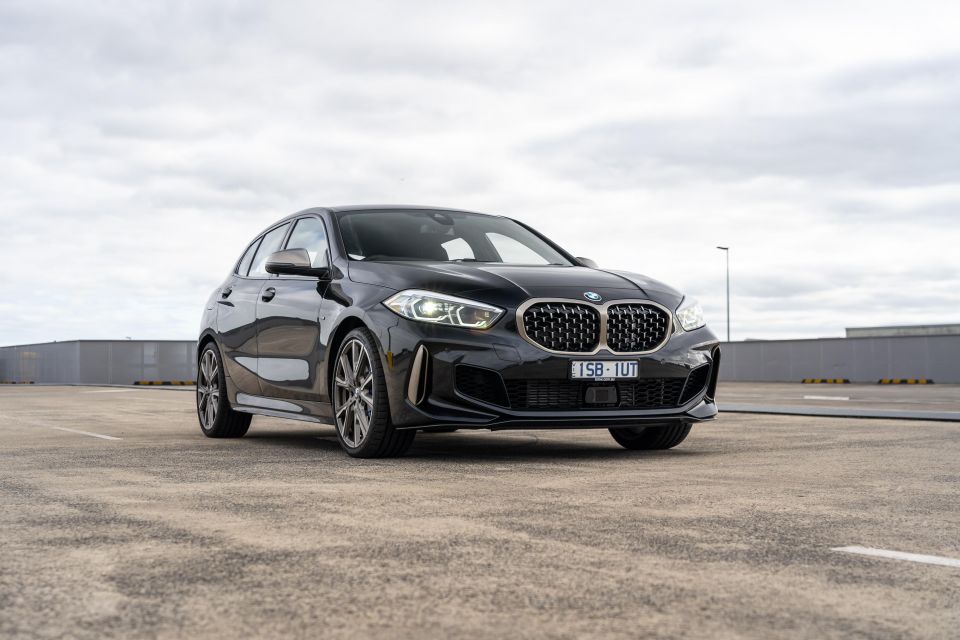
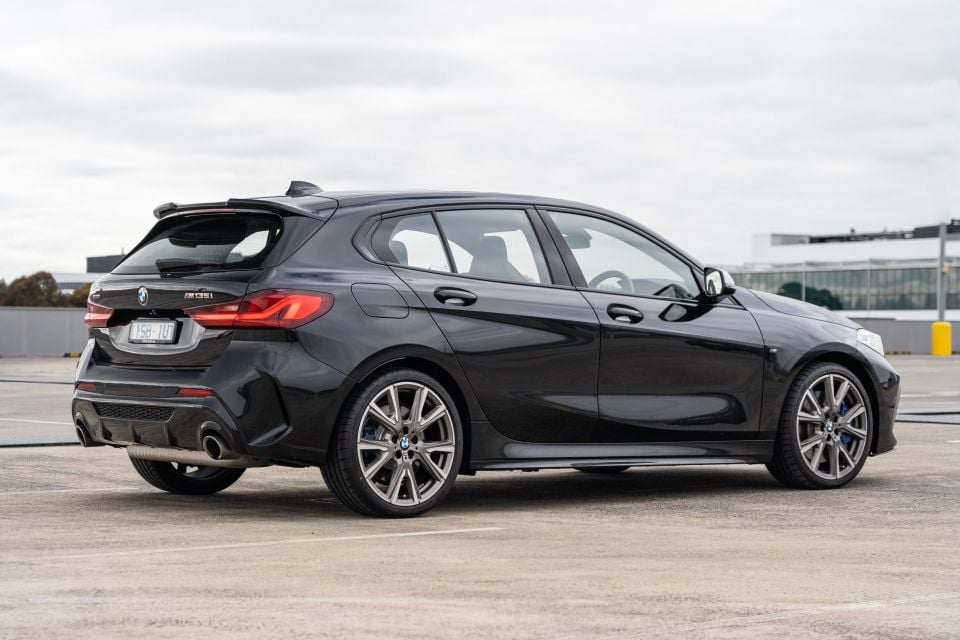

Marketplace Editor
New from
$70,900
excl. on-roads

Marketplace Editor
New from
$70,900
excl. on-roads


Marketplace Editor
New from
$70,900
excl. on-roads

Marketplace Editor
New from
$70,900
excl. on-roads
Quickly see how this car stacks up against its competition. Select any benchmark to see more details.
Where expert car reviews meet expert car buying – CarExpert gives you trusted advice, personalised service and real savings on your next new car.
The BMW 1 Series has a history of offering excellent performance versions – just think back to the first-generation 130i hatch with its naturally-aspirated inline six, the manic 1 Series M Coupe, and the sleeper-spec second-gen M140i.
However, where the first two iterations were based on a rear-wheel drive platform, the latest 1 Series family moves to the front-drive UKL architecture shared with the X1, X2 and the wider Mini line-up. Does it still possess the dynamic talents of its predecessors despite the shift in drive layout?
What better way to test that theory than getting behind the wheel of the flagship offering, the 2021 BMW M135i xDrive.
It has beefy outputs from its four-cylinder turbo, all-paw traction and a more spacious interior than its rear-driven forebear, all of which would suggest it’s an improvement. Then again, this is a fairly generic formula (used by the Audi S3, Mercedes-AMG A35 and Volkswagen Golf )
Does that mean the 1 Series gets lost in a crowd of all-wheel drive hot hatches?

The M135i xDrive comes in two specifications: entry-level Pure, and the higher-grade M135i.
Pricing for the BMW M135i xDrive Pure kicks off at $65,900 before on-road costs, with the full-fat M135i xDrive tested here demanding a $5000 premium at $70,900 plus on-roads.
Our test car was optioned with Black Sapphire metallic paint ($1700) and the Comfort Package ($1330). We’ll get to the contents of the latter in the next section.
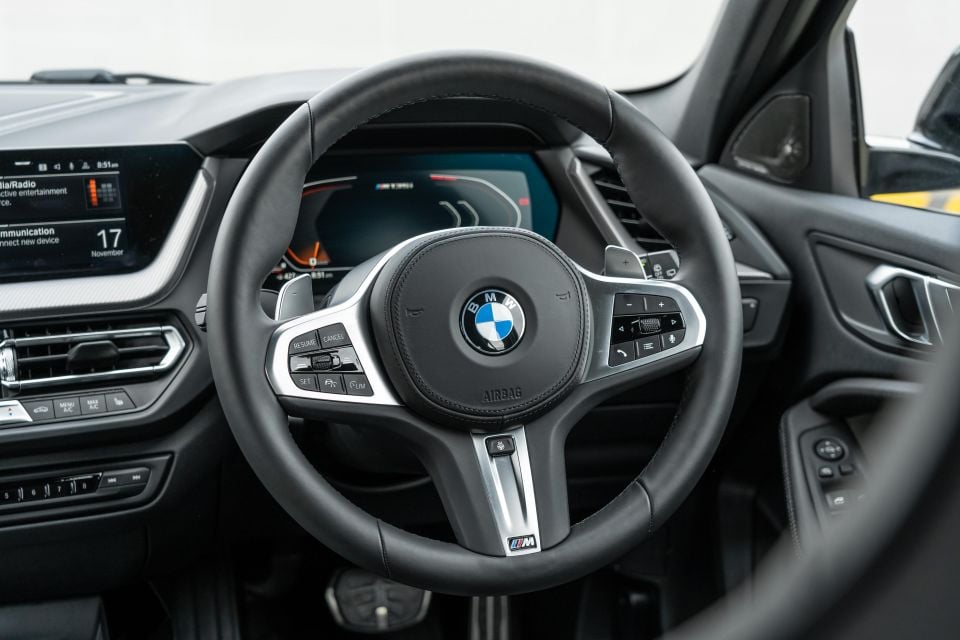
While $70,000 is a lot of money for a small hatchback, rival models have jumped in price of late and are either around the same bracket or even more expensive.
Key competitors include:
All prices exclude on-road costs.
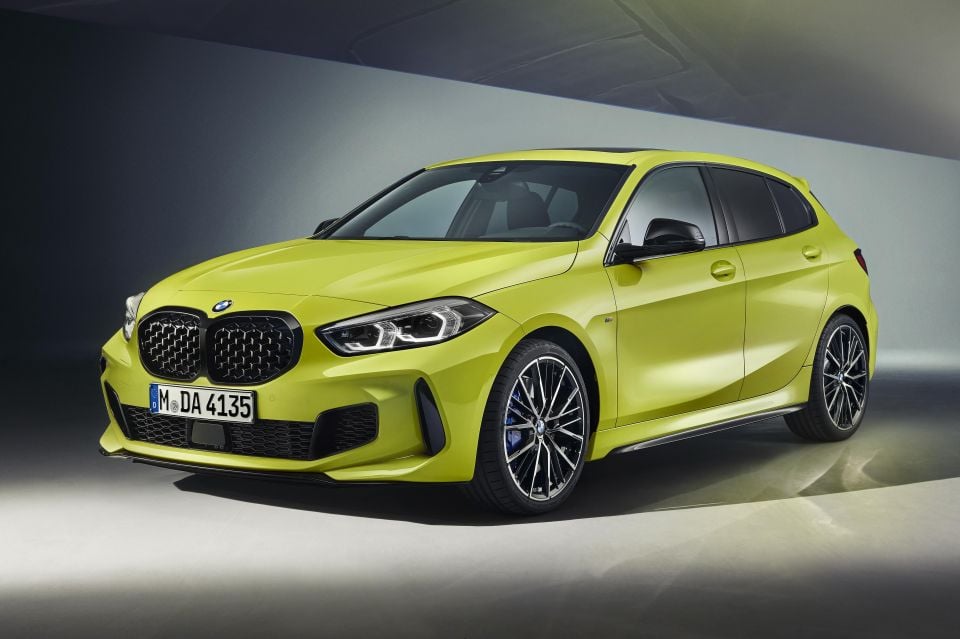

It’s also worth noting BMW has detailed an incoming 2022 update to the M135i which will arrive during the first quarter of next year.
A range of changes and enhancements are in store for the 2022 version, including more camber on the front wheels, a new mount for the front suspension wishbones, as well as redesigned trailing and control arms at the rear.
BMW claims the changes will provide an improved steering feel, while a revised exhaust system should accentuate the M135i’s soundtrack.
A couple of new colours will be offered too depending on market, including the eye-searing Sao Paulo Yellow pictured above.

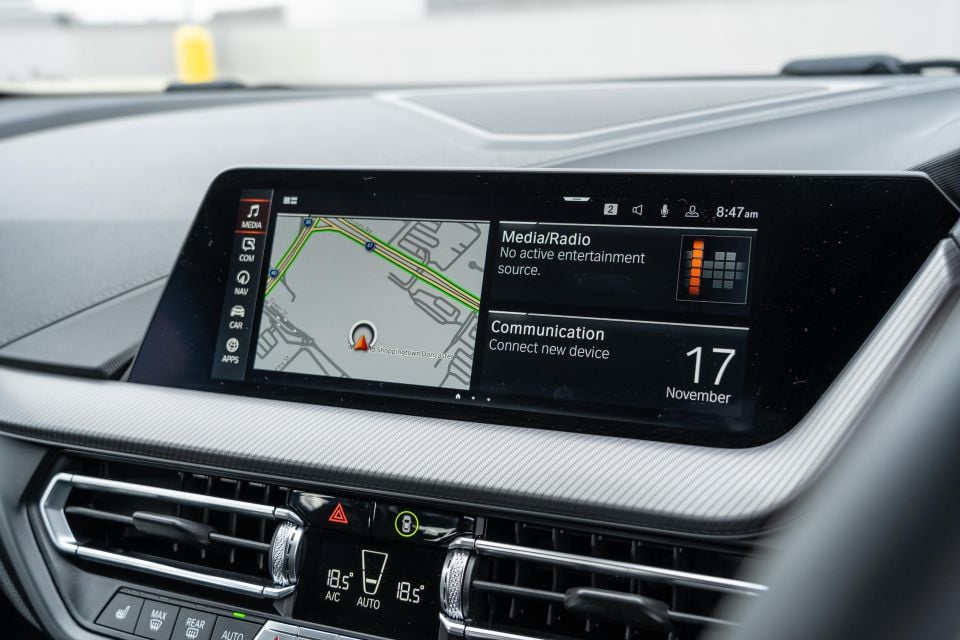
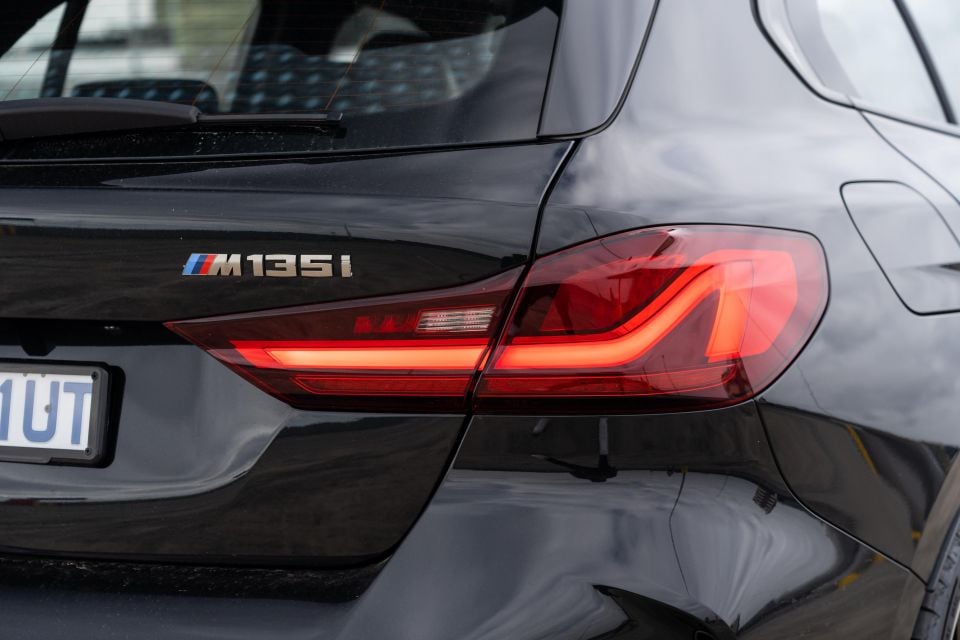
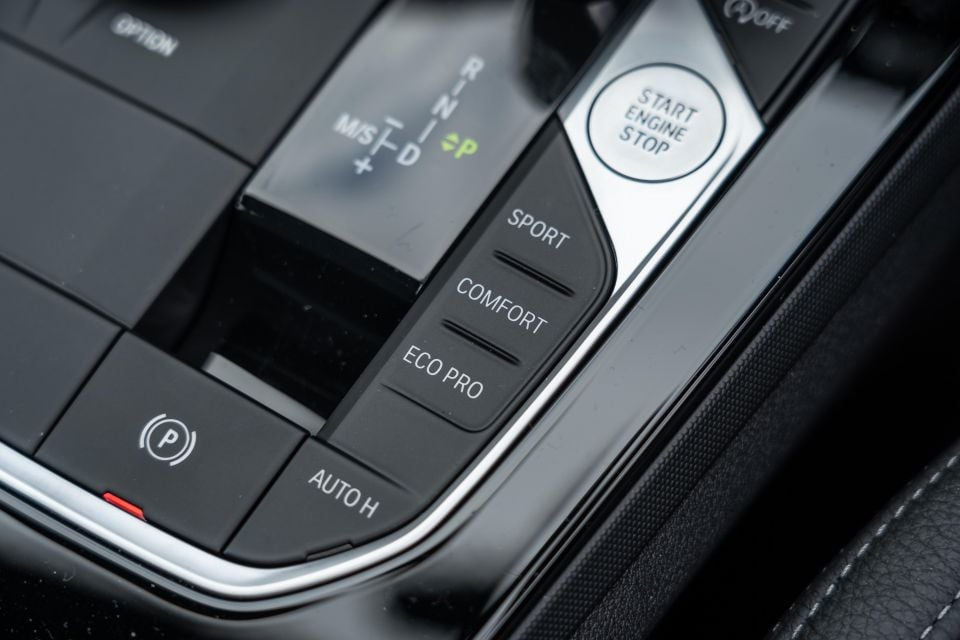
Buy your new car without the stress. It's fast, simple and completely free.

Great service from Travis and team, second time I have used this business would not hesitate to recommend them to anyone
Craig C.
Purchased a Ford Ranger in Sunshine Coast, QLD
CarExpert helped Craig save thousands on his Ford Ranger, now let us save you on your next new car.
Find a dealM135i xDrive Pure highlights:
M135i xDrive adds:
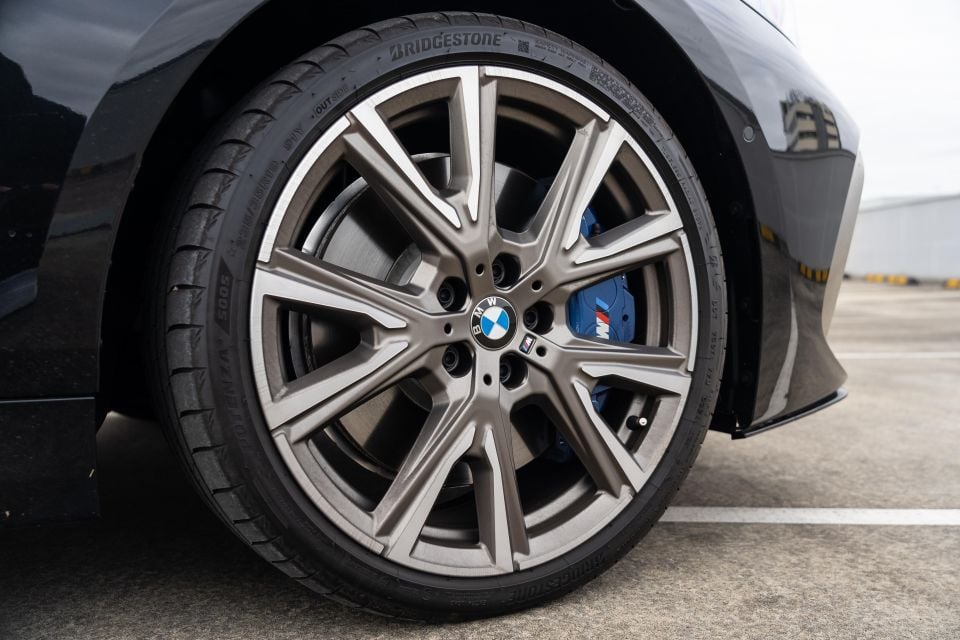
That’s on top of kit carried over from the 128ti and 118i, which includes:
The optional Comfort Package ($1330) adds:
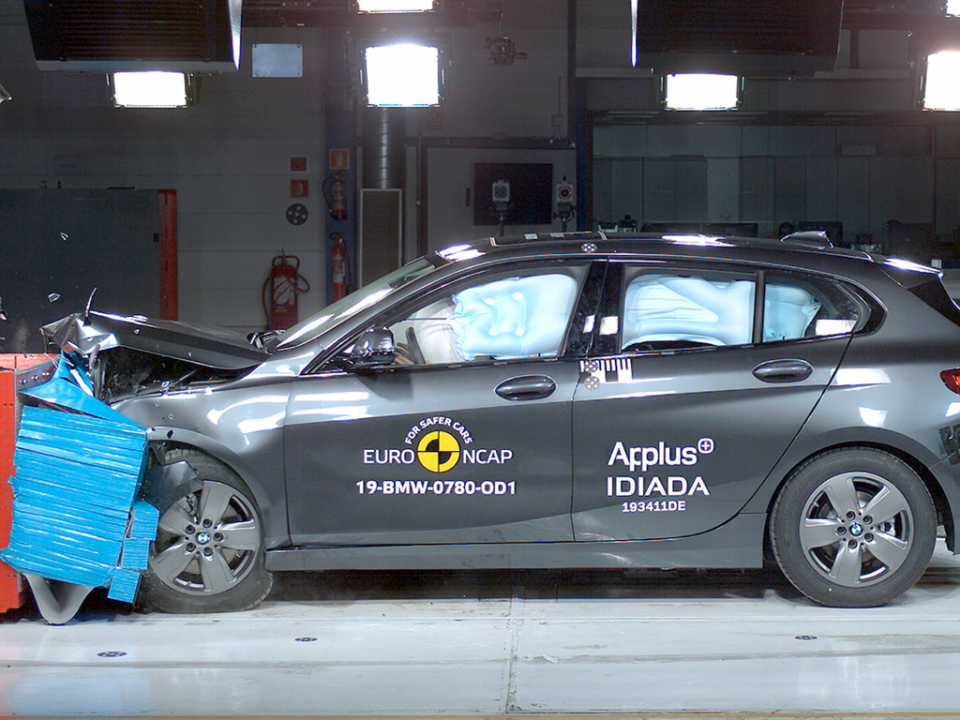
The BMW 1 Series wears a five-star ANCAP safety rating with 2019 date stamp, based on tests conducted by Euro NCAP.
It received 83 per cent for adult occupant protection, 89 per cent for child occupant protection, 76 per cent for vulnerable road user protection, and 73 per cent for safety assist.
All models come with the following safety features:
Adaptive cruise control with stop/go is an $850 option on the M135i xDrive, while a tyre pressure indicator adds a further $400.
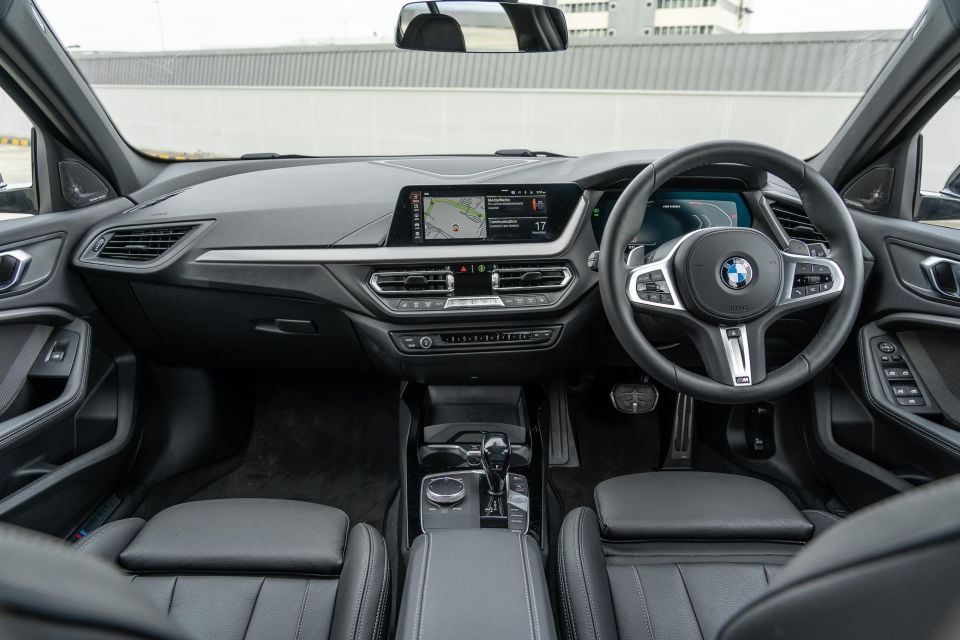
The latest 1 Series made a marked step up in terms of interior technology and trimmings, meaning it feels more worthy of being compared to the glossy cabin of the Mercedes-Benz A-Class, as well as the upcoming Audi S3.
Unlike its platform mates – the X1 and X2 – the M135i gets the BMW OS7.0 infotainment and driver instrument interface from larger BMW models like the 3 Series and X5, which is widely regarded as one of the best in the luxury segments.
Our test car’s standard black ‘Dakota’ leather interior doesn’t really excite from a visual perspective – a brighter Magma Red interior is available as a no-cost option – but fit and finish is pretty darn solid.
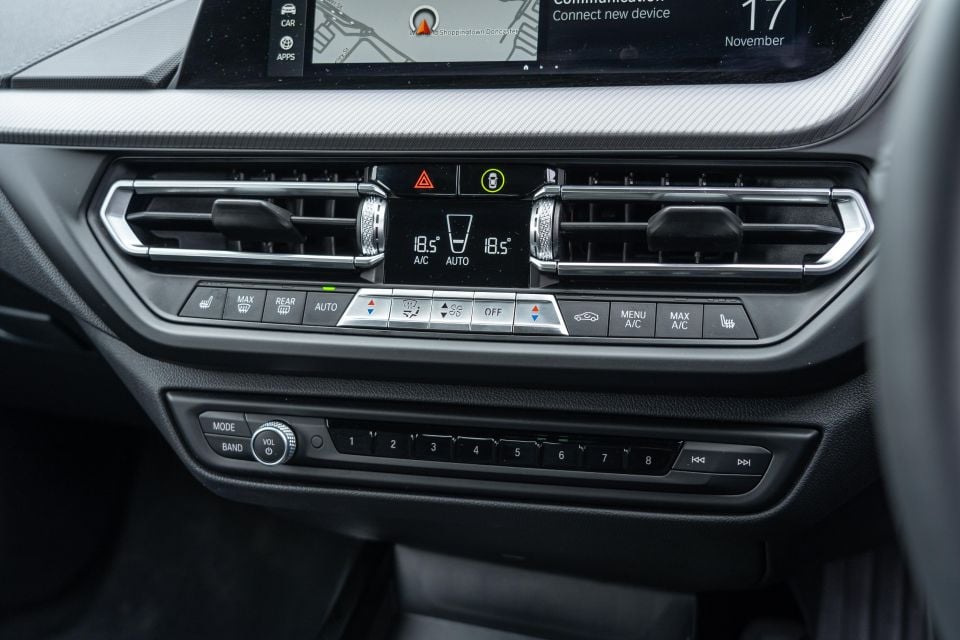
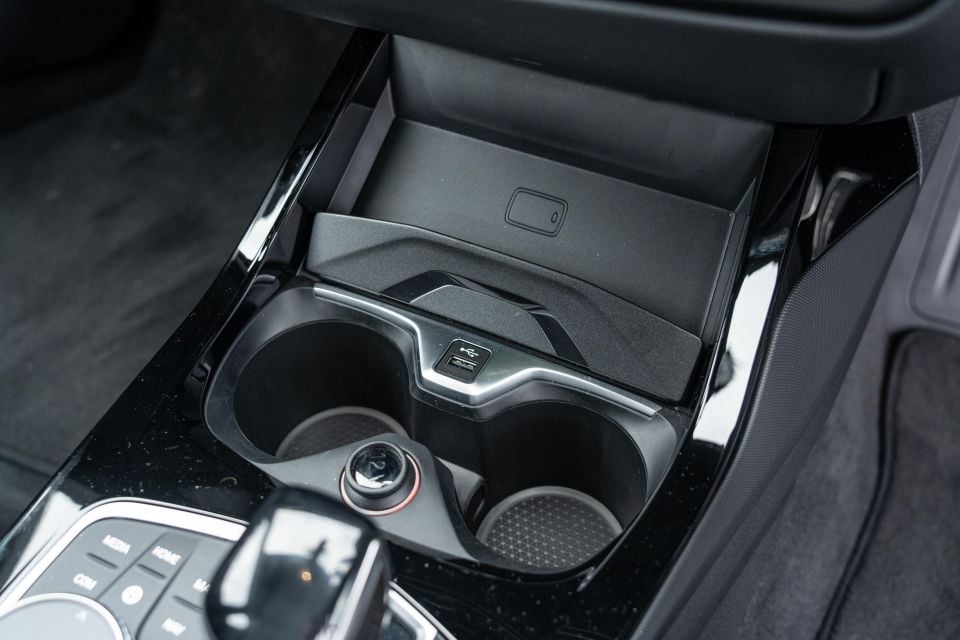
There’s a high ratio of soft-touch and padded leatherette surfaces, and all the touchpoints feel worthy of a premium-badged vehicle. It’s also typically BMW in that the ergonomics and switchgear are well laid out and high quality.
Ahead of the driver is a chunky M leather steering wheel that feels nice and solid in the hand, while the 10.25-inch digital instrument cluster features the same digital layout you’ll find in pricier BMW model lines. It lacks the configurability of Audi and Mercedes systems, but it’s high-res, smooth in response, and fits the premium pitch.
The M Sport Seats up front with integrated headrests are manually operated but offer a wide range of adjustment, including a thigh extender. They’re quite comfortable and the chunky bolsters hug you tight in the bends.


As noted earlier that BMW OS7.0 – or seventh-generation iDrive – with wireless Apple CarPlay works well and looks the goods. The trademark rotary controller is augmented by touchscreen functionality, and sound quality from that 16-speaker harman/kardon audio system is solid, too.
Storage is pretty good up front, with a phone holder with wireless charging pad, large door bins, and a deep cubby under the front-centre armrest giving you plenty of options to store your odds and ends.
There’s also the quirky trim inserts which double up as ambient lighting canvases. It gives a cool lighting signature at night that can be set to different colours, but some may prefer the appearance or tactility of the usual alloy, wood or carbon trims that aren’t offered.
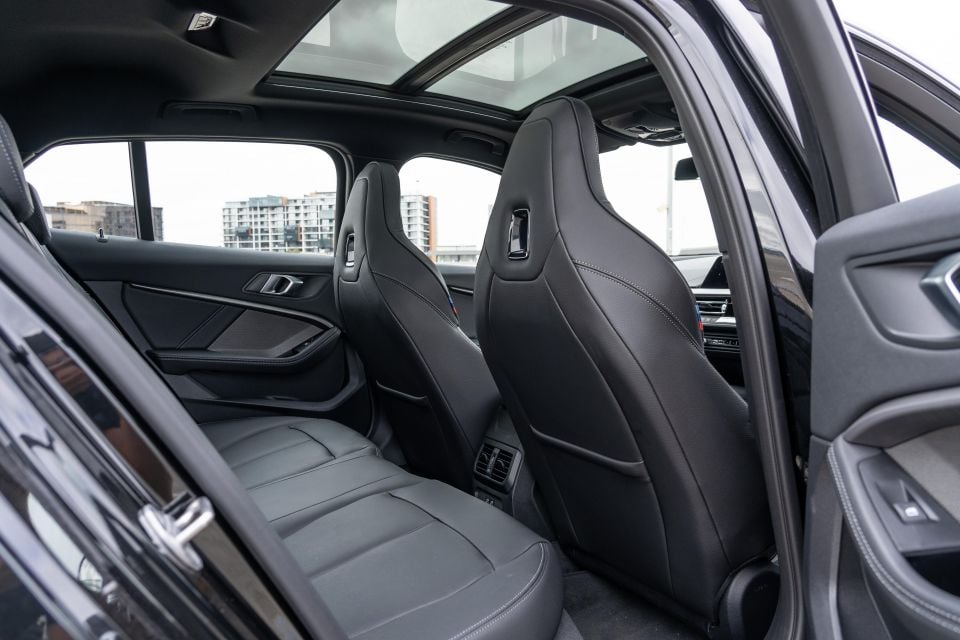
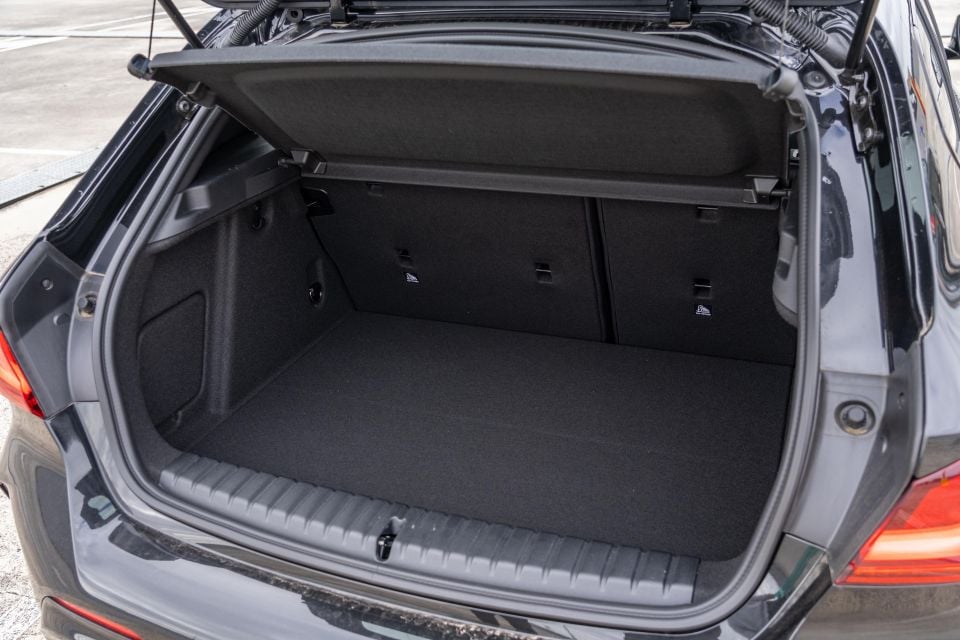

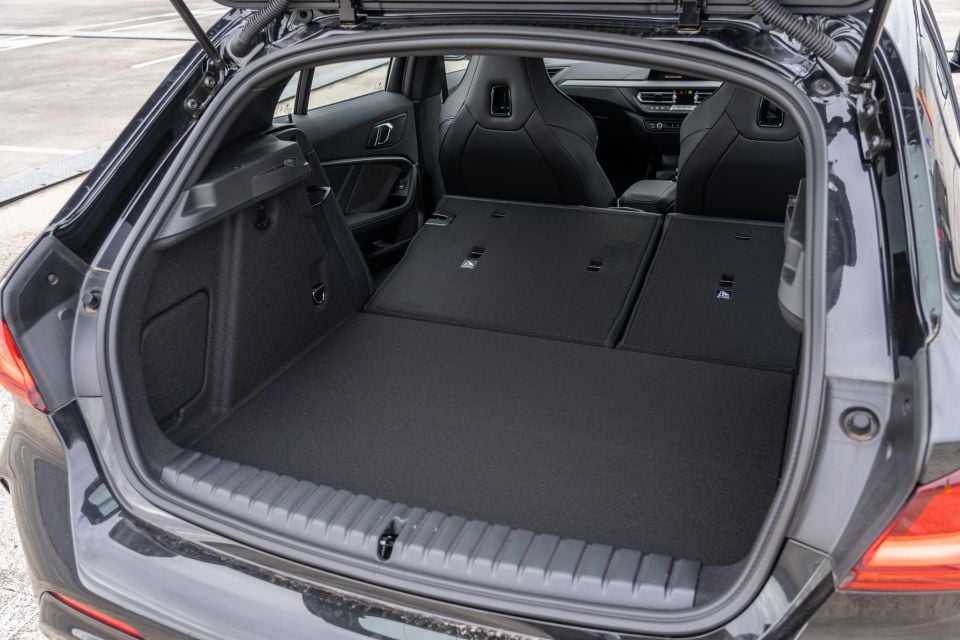
In the second row, there’s more room for normal-sized people than the previous generation. That move from rear-wheel drive to front-wheel drive has afforded more space in the back and the boot.
Air vents, USB-C charge points and map pockets headline the rear amenities, as well as bottle holders in the doors. There’s no fold-down centre armrest with cupholders, however, but there are ISOFIX anchors and top-tether points for child seats.
Luggage capacity is rated at 380L with the rear seats in use, expanding to 1200L with them folded. It’s pretty much on par with rivals.
There’s so spare tyre – full-size or space-saver. Instead a tyre repair kit is included.
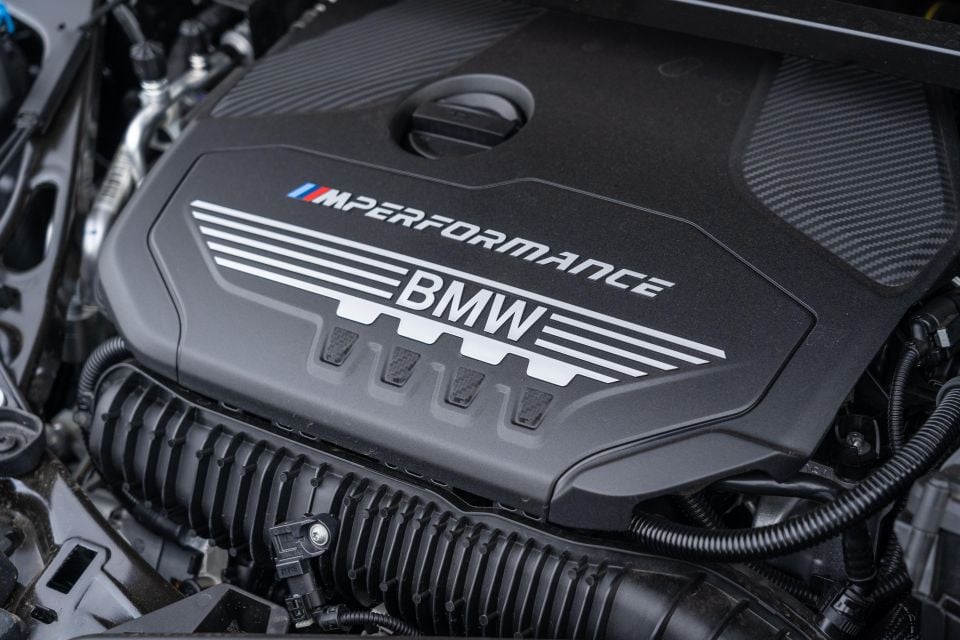
Despite the M135i badging, power in the flagship 1 Series comes from a 2.0-litre four-cylinder turbocharged petrol engine, mated to an eight-speed automatic transmission with paddle shifters and a front-biased xDrive all-wheel drive system.
Outputs are quoted at 225kW (6250rpm) and 450Nm (1750-4500rpm), with 0-100km/h taking a claimed 4.8 seconds on its way to a top speed of 250km/h.
It’s the same drivetrain used in the X2 M35i, and JCW versions of the Mini Countryman and Clubman.
Fuel consumption, meanwhile, is rated at 7.5L/100km on the combined cycle, with the M135i’s 50-litre fuel tank requiring 98 RON premium unleaded.
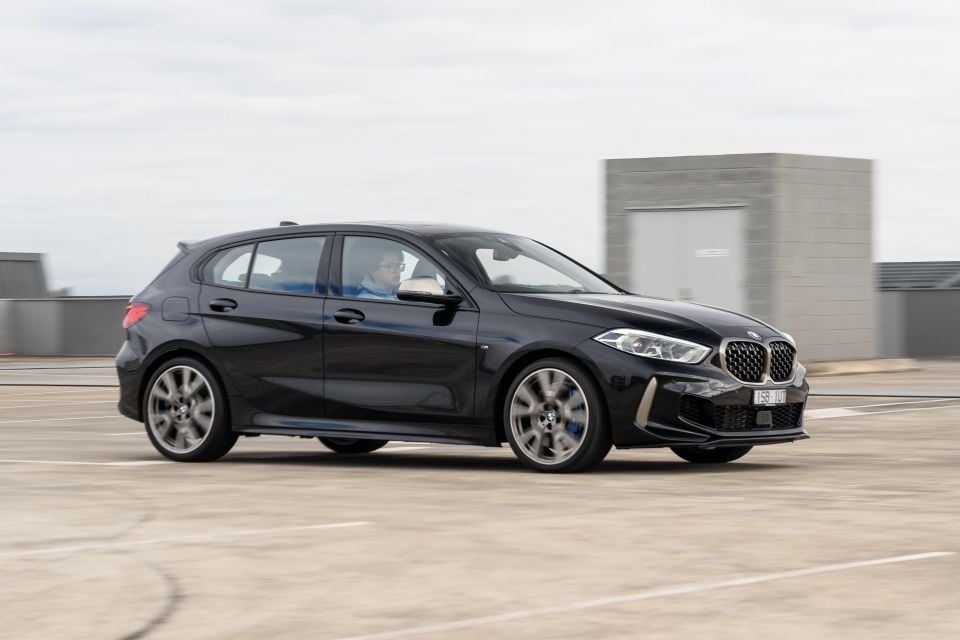
I had high hopes for the M135i, given my love for the previous M140i and other rear-driven BMW products.
Start it up and it sounds the part, with a throaty growl that definitely has more character than some of the more muzzled tones we’re getting from of European brands at the moment due to emission-reduction systems and changes to noise regulations overseas.
Get moving and that BMW feel doesn’t really translate to the drive experience. By that I mean the latest M135i doesn’t do much to distinguish itself from other front-biased hot hatches on the road.
The 2.0-litre turbo has oodles of torque and the eight-speed Aisin-sourced conventional automatic transmission does a reasonable job of balancing athleticism with everyday drivability, but the character overall is a bit generic.
If it wasn’t for the smattering of BMW badges and the cabin layout, which is distinctly BMW in design, I probably would have thought I was driving a Mini. Yes, they obviously share mechanical hardware, but that rear-drive BMW DNA that was so great in the previous generation has been lost, and it’s worse off for it.
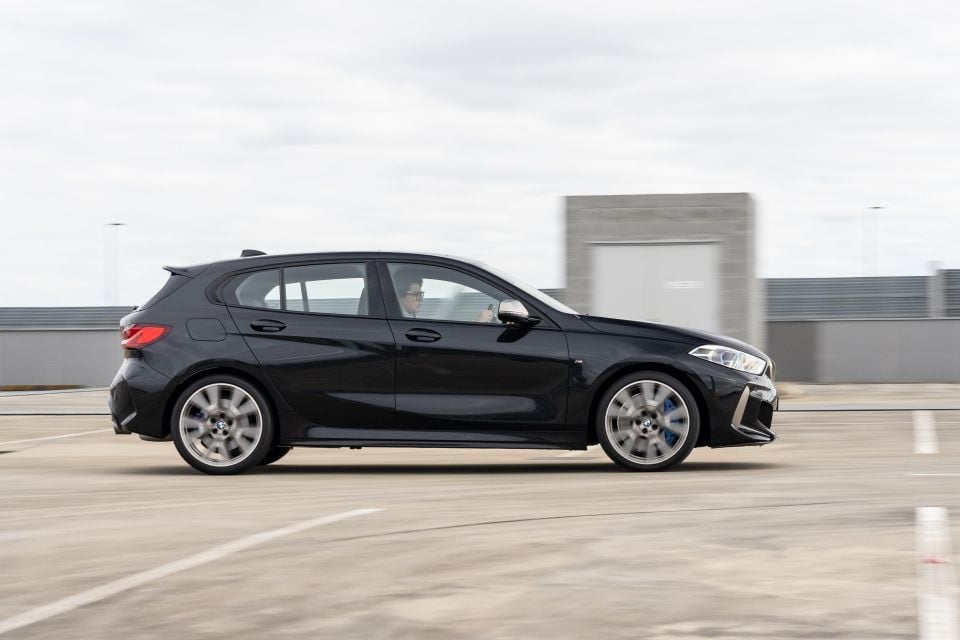
Where expert car reviews meet expert car buying – CarExpert gives you trusted advice, personalised service and real savings on your next new car.
There’s plenty of grip courtesy of the xDrive all-wheel drive system, but drive it hard and it doesn’t always inspire confidence. Similar to what I experienced with the X2 M35i with the same oily bits, the tricky diffs for the front axle and centre differential can often be caught out dozing off, feeling too reactive and waiting for too much slip before really activating.
Flick it into Sport and the transmission into its manual mode and you can enjoy pulling the paddles to change gears, but the engine note in this mode sounds overly synthesised in the cabin (though it sounds great with the windows down). You do get a satisfying crack on upshifts, however.
Performance in a straight line is very muscular, as you’d expect given the outputs and all-paw running gear. However, like I mentioned earlier, there’s nothing about it that screams BMW to you.
Further, low-speed drivability could use some work despite the torque converter auto in place of a dual-clutch. I’ve found in previous reviews that the eight-speeder can be lazy to kick down or when setting off, and it was the same in the M135i.
Try to be smooth away from the lights and you can be waiting a couple of moments before you really get moving, and accelerating out of slip lanes can be met with noticeable lag as the transmission finally decides to shift down a cog or two to get you back in the torque band. It just feels lacking in polish.
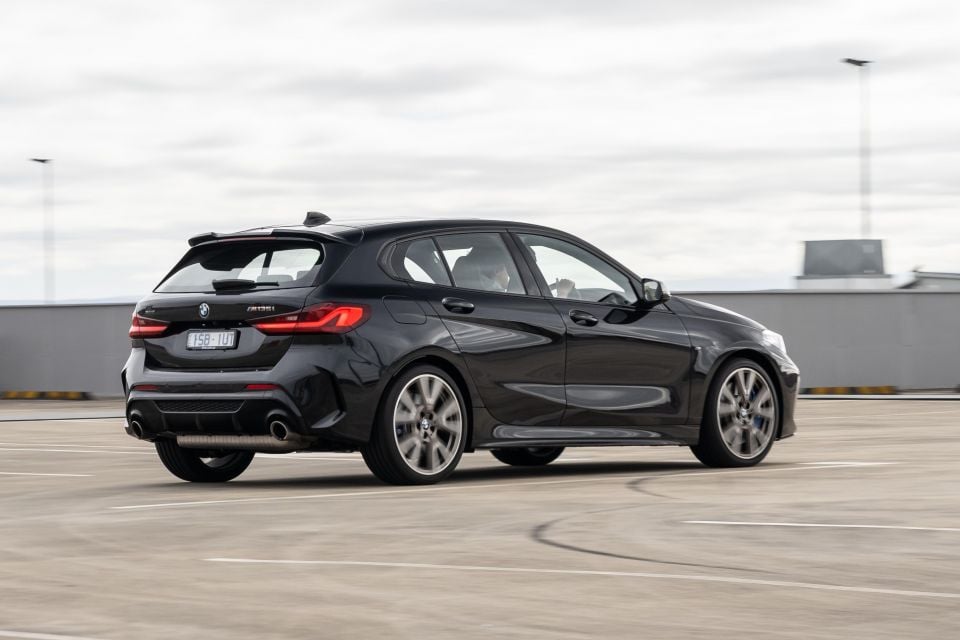
The M135i feels marginally more comfortable than the 128ti I sampled around the same time, though it’s still quite firm for daily use in the city. You feel most imperfections in the road with the standard chassis setup, though opting for the adaptive dampers ($400) would add more adjustability.
Roadholding at speed is excellent, however, with the M135i demonstrating its Autobahn-engineered roots when cruising on the freeway. Even in adverse weather, it feels planted, confident and relaxed.
As we’ve found with other UKL-based BMW and Mini products, road noise needs a bit of work. On smooth bitumen the cabin feels nice and insulated, but tyre roar on rougher patches of road is quite noticeable and doesn’t feel befitting of a luxury-branded product, even a performance model.
The M135i features lane departure warning and blind-spot monitoring as standard, both of which come in handy on the freeway and when navigating high-traffic commutes, but the lack of adaptive cruise control ($850) as standard really feels rude on a $70,000 small car.
BMW should just increase the price by $1000 and throw in adaptive dampers and adaptive cruise in the full-fat M135i xDrive. The lack of either feature makes a little more sense in the Pure, but not the flagship.
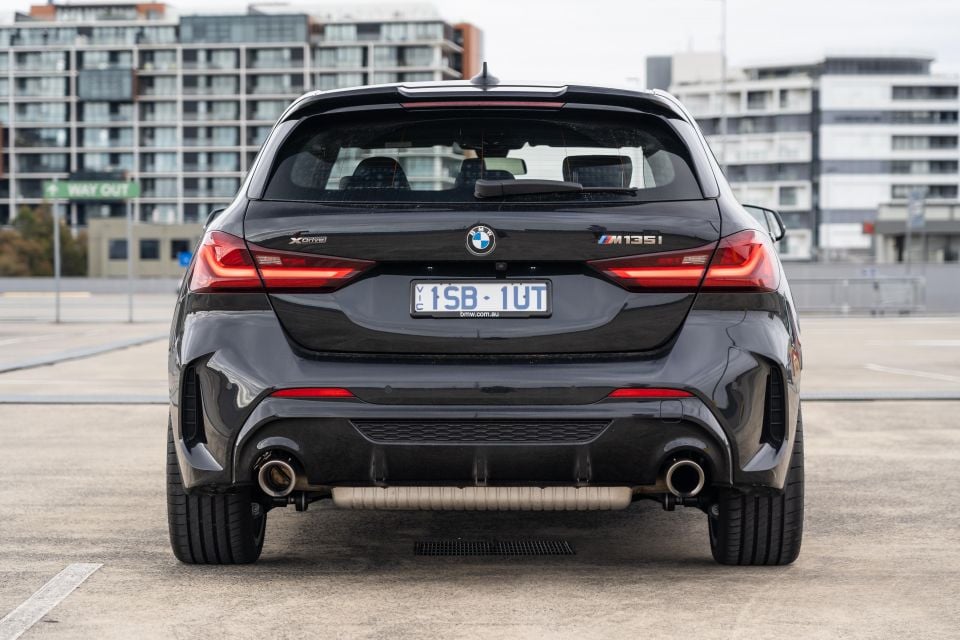
The 1 Series is covered by BMW Australia’s three-year/unlimited-kilometre warranty, despite rival brands moving to five-year warranties.
BMW offers two different capped-price servicing packages for the 1 Series. A five-year, 80,000km Basic plan is $1650, while the Plus plan costs $4340.
The Plus plan includes replacement brake pads and discs, clutch discs and plates, as well as consumables like wiper blades.
We averaged 8.4L/100km according to the trip computer, with a mix of highway and urban driving. Not bad for real-world consumption, but still up on BMW’s 7.5L/100km combined claim.
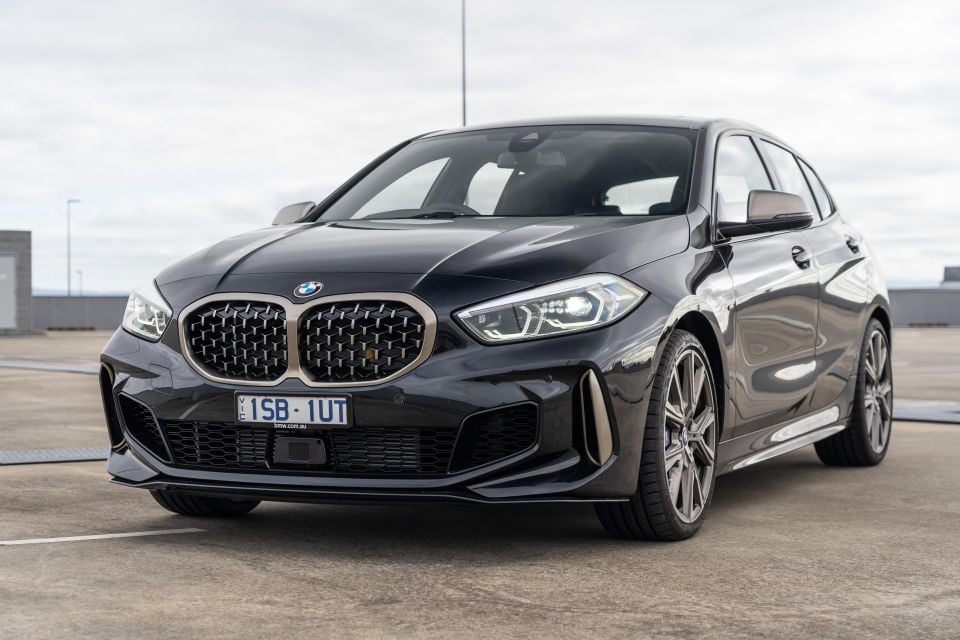
The BMW 1 Series was once the dynamic benchmark of the compact class, but the switch to Mini underpinnings has left me thoroughly underwhelmed with this flagship M135i.
While it looks racy inside and out, and has an engine with the outputs and exhaust note to put a smile on your face, the M Performance version of BMW’s smallest passenger model doesn’t do enough to distinguish itself from rival front-biased AWD hot hatches, and lacks the character of something like a Mini JCW Hatch or JCW Clubman.
There’s no disputing its performance or premium cabin, but the M135i doesn’t offer the tech or all-round usability of an Audi S3 or VW Golf R, nor can it blow any of its direct rivals out of the water in terms of straight-line performance or corner-carving ability.
Once you factor in on-road costs it’s pushing $80,000 – personally, if I’m spending that much money I’d want to be head-over-heels in love with it. Shame I’m not.
This isn’t a horrible car in isolation, but coming from a brand that prides itself on being the Ultimate Driving Machine, BMW can do better.
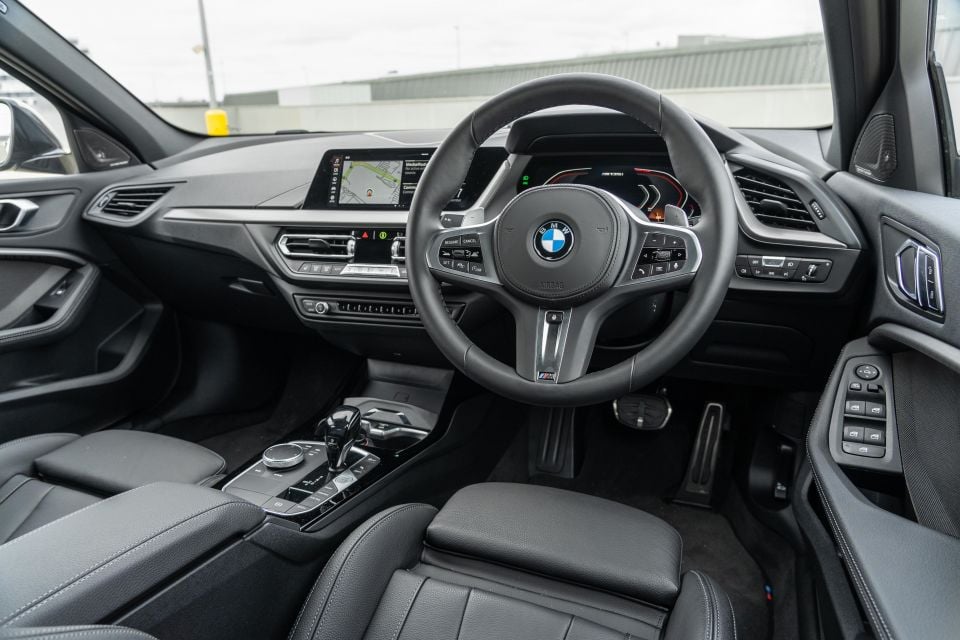
Click the images for the full gallery
MORE: Everything BMW 1 Series
Where expert car reviews meet expert car buying – CarExpert gives you trusted advice, personalised service and real savings on your next new car.
James Wong is an automotive journalist and former PR consultant, recognised among Australia’s most prolific motoring writers.


Damion Smy
5 Days Ago
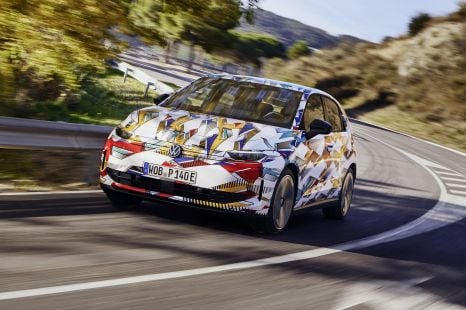

William Stopford
12 Days Ago
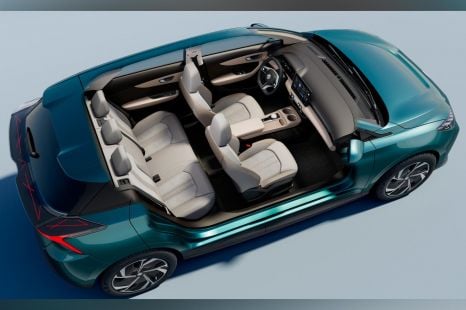

William Stopford
13 Days Ago
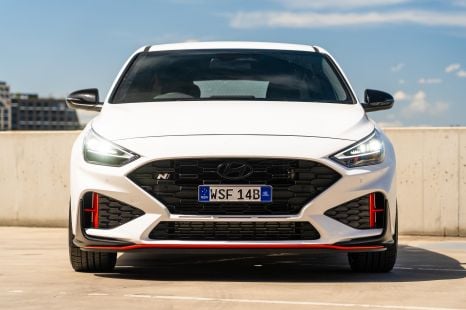

William Stopford
19 Days Ago
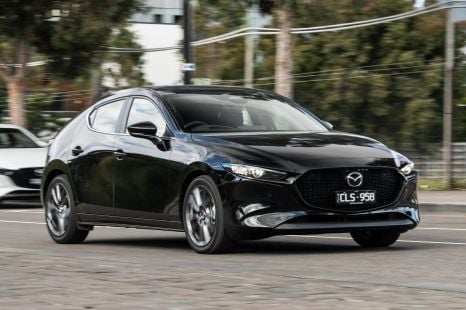

Josh Nevett
27 Days Ago
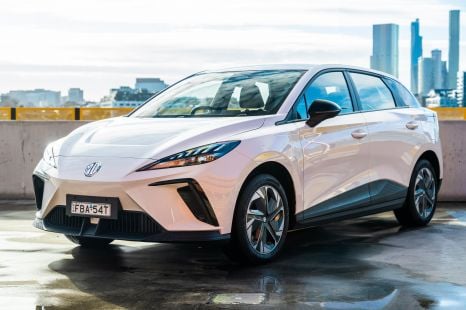

William Stopford
1 Month Ago